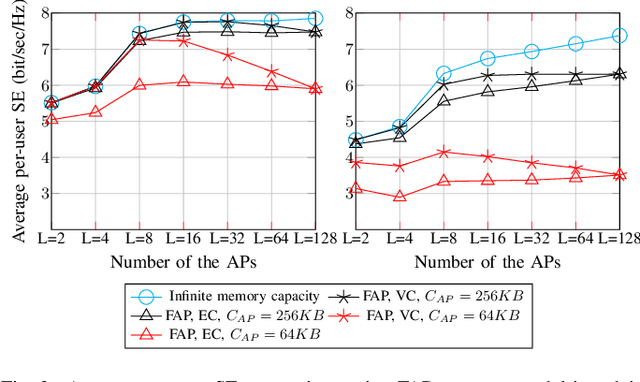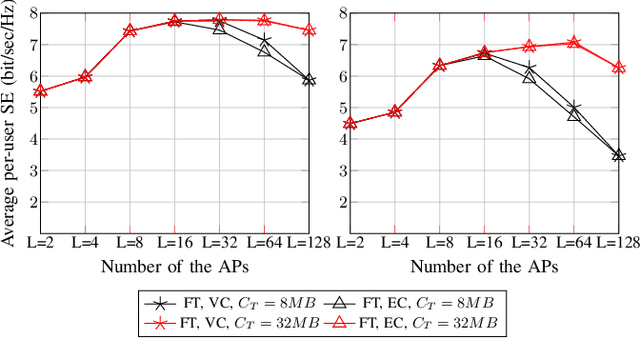Sequential Processing in Cell-free Massive MIMO Uplink with Limited Memory Access Points
Paper and Code
Dec 09, 2023


Cell-free massive multiple-input multiple-output (MIMO) is an emerging technology that will reshape the architecture of next-generation networks. This paper considers the sequential fronthaul, whereby the access points (APs) are connected in a daisy chain topology with multiple sequential processing stages. With this sequential processing in the uplink, each AP refines users' signal estimates received from the previous AP based on its own local received signal vector. While this processing architecture has been shown to achieve the same performance as centralized processing, the impact of the limited memory capacity at the APs on the store and forward processing architecture is yet to be analyzed. Thus, we model the received signal vector compression using rate-distortion theory to demonstrate the effect of limited memory capacity on the optimal number of APs in the daisy chain fronthaul. Without this memory constraint, more geographically distributed antennas alleviate the adverse effect of large-scale fading on the signal-to-interference-plus-noise-ratio (SINR). However, we show that in case of limited memory capacity at each AP, the memory capacity to store the received signal vectors at the final AP of this fronthaul becomes a limiting factor. In other words, we show that when deciding on the number of APs to distribute the antennas, there is an inherent trade-off between more macro-diversity and compression noise power on the stored signal vectors at the APs. Hence, the available memory capacity at the APs significantly influences the optimal number of APs in the fronthaul.
 Add to Chrome
Add to Chrome Add to Firefox
Add to Firefox Add to Edge
Add to Edge